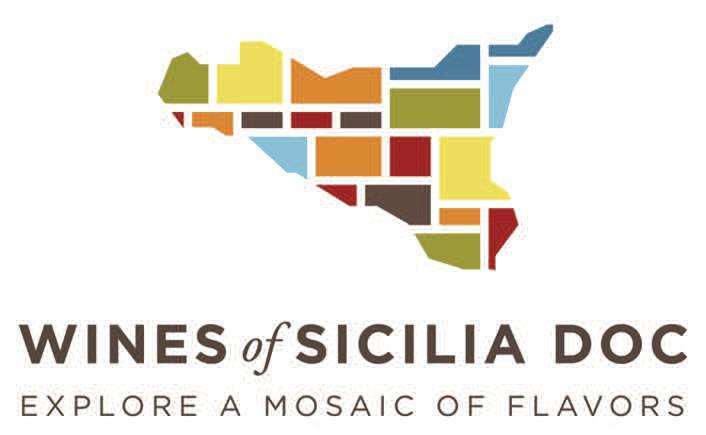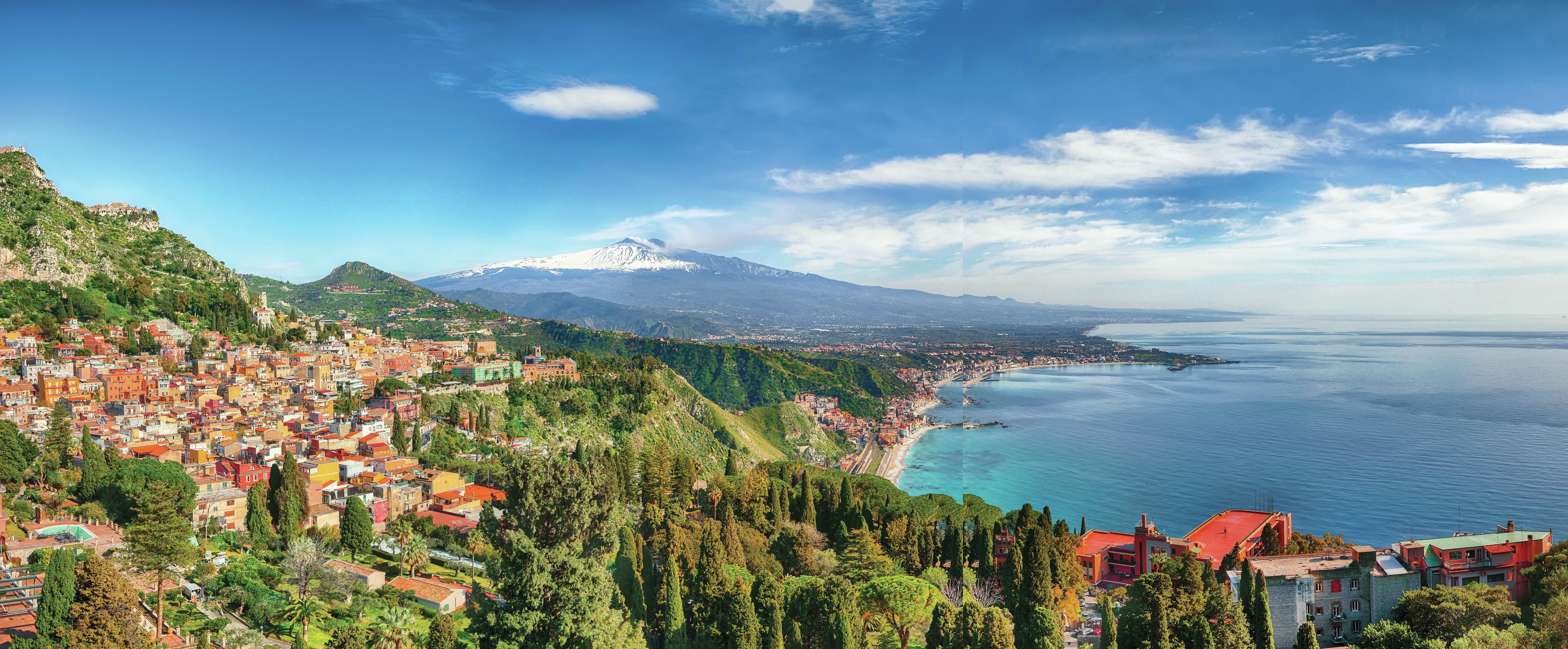This website uses cookies so that we can provide you with the best user experience possible. Cookie information is stored in your browser and performs functions such as recognising you when you return to our website and helping our team to understand which sections of the website you find most interesting and useful.
Sicily: a wine masterclass
The Mediterranean came to London in June, as Sicilia DOC hosted its annual trade tasting. Patrick Schmitt MW guided guests through the tremendous diversity and value found on the island
Taking the subtitle ‘an island of opportunity’, Patrick Schmitt MW’s presentation explored Sicily’s complex identity and the work done by Sicilia DOC to promote it. He offered many reasons for the region’s growing potential, including geology, climate, history and grape varieties, as well as sustainability and value. As Pietro Russo, Sicilian winemaker, put it, “Sicily really is a gem; you can make anything, anything you want you can make it.”
The seminar opened with the fundamentals. Easily spotted on the map, the island is the biggest in the Mediterranean, and has a rich history and culture. Greek temples and baroque churches complement the picturesque landscape, while a strong local identity shines through in the island’s distinct dialect and centuries-old fishing and agricultural industries. The likes of TV series’ Inspector Montalbano and The White Lotus mean this unique region is receiving increased attention.
Its wine industry is also emerging into the limelight, with many opportunities ripe to take. Sicily has almost 100,000 hectares under vine, close to three times New Zealand’s total. 26,000ha are now farmed organically and 42,000 adhere to strict sustainability rules, meeting increased consumer expectations in these fields. It is also a land of slopes, with 61% of vineyards on hills and 24% on mountainous terrain. For the modern producer, the island has much to offer.
One way for the region to maximise its potential has been through Sicilia DOC, established in 2012. The island-wide denomination accounts for 26,000ha, and aims to cover half of Sicily’s 96,000ha of vineyards. The DOC’s regulations provide stricter quality control than for IGT wines, mandating lower yields, chemical analysis and taste tests, but they also allow flexibility. Sicilia DOC, unlike other denominations, allows varietal labelling, and there are now eight denominations, including Etna DOC, permitted to use ‘Sicilia’ on their labels. 96 million bottles currently carry the Sicilia DOC name, and the consortium is continually working to build and promote the island’s wine industry. Having briefed attendees on Sicily’s unique position and the DOC promoting it, Schmitt turned to a closer examination of its climate. Situated in the middle of the Mediterranean, Sicily’s climate is defined by dry summers and mild, rainy winters. Extremes of heat are a risk, such as in 2021 when Syracuse hit 48°C, but many are observing that the constant sea winds offer resilience and some protection against climate change.
Yet consistency does not mean uniformity. The island covers approximately 25,000 square kilometres, and so conditions vary from site to site. In general, the island can be divided into four sub-climates: mild coastal areas; warmer, humid areas on Etna; mountainous sites with a large temperature range; and hot, humid inland areas. In such varied conditions, it comes as little surprise that harvest dates range across 100 days, from late July right through to November.

Next on the agenda was a deep dive into Sicily’s geology. After exploring some mythical explanations, Schmitt explained the literal deep dive that helped create the island. Its geography is determined by the dense African tectonic plate slowly being pushed beneath the Eurasian plate. This destructive plate margin, in combination with the Apennines, formed the mountainous landscape and contributed to its unique geology. The island also shows complex sedimentary geology, the consequence of a rapid and chaotic flooding of the Mediterranean 5.6 million years ago.
The result is an impressively varied geography. The soils range from clay and sand to schist and volcanic influences, with notable areas of white chalk, hard metamorphic soil and gypsum. Altitude also varies hugely, ranging from mountainous vineyards more than 1000m above sea level to those in Marsala that sit below sea level. These diverse conditions, alongside the island’s subclimates, have earned the island a reputation as a diverse ‘viticultural continent’ among its residents.
History is a further context for Schmitt’s analysis of Sicily, a 26 century heritage you can trace to the ancient Greeks. In the era before phylloxera, Sicily’s vineyards covered around 300,000ha, dwarfing current levels. In fact, as the pest arrived late, for around 25 years Sicily was a key producer for all of Europe. However, when phylloxera came in 1880, it brought a massive decline in production. Around a century of bulk wine production followed, meaning the quality drive initiated by a few well-known family producers is a relatively new development. Recent investment by famous names from other Italian regions is still the exception in a land more used to large production and co-ops.
The final piece of the puzzle Schmitt offered proved the most rewarding: exploring Sicily by grape variety in an otherwise blind tasting. The unusual format diverted attention away from producers, instead focusing on varieties and sites. Sicilia DOC is led by its flagship white and red grapes (Nero d’Avola and Grillo, respectively), but 12 other indigenous varieties, plus 13 international ones, can be grown in the denomination. Not only offering a point of difference, these ‘relic’ grapes preserve the region’s heritage.

On the white side, he began with Catarratto, a grape perfect for light, fruitdriven whites. Layered with aromas of citrus and flowers, and all at a refreshingly low 12.5% ABV, the wine was an elegant introduction to the tasting of native grapes.
This led the audience to Grillo, the island’s signature white and the offspring of Catarratto and Zibibbo. The three examples showcased its versatility, beginning with a light, bright option designed to shine by the glass with lively lemon aromas and a delicate herbal hit. Two more examples then demonstrated its premium potential. Both organically farmed, they showed richer textures (from lees stirring and French oak respectively) and the first hints of complex, developed character.
The whites were rounded off by a dry Muscat, proving that aromatic varieties can thrive even in hot climates. Moving onto the reds, Schmitt began with a perfect example of a ‘relic’ grape. Although once consigned as an obscure blending grape, Perricone is being revived by producers. The wine presented showed its appealing savoury character, occupying a similar space to trendy Barbera. It is one of several niche grapes developing a following; others include juicy, light Frappato and savoury, Syrahesque Nocera.
However, the star red grape was the most famous: Nero d’Avola. Sicily’s most planted variety is known for its deep colour and aromas of plum and chocolate, but again has great versatility. It is a perfect canvas for Sicily’s many terroirs, as clay soils heightens its dryness and acidity while sandy sites accentuate floral and spicy notes. Producers are also experimenting in the winery, as many look to create lighter, juicier options that can compete with Pinot Noir or Gamay. The two wines presented proved its distinct identity while illuminating the nuances that site selection and winemaking can create. This tasting demonstrated the breadth of wine found on the island, even while highlighting only five of more than 20 permitted grapes. Having explained the complexities of the island’s history, geology, climate and varieties, Schmitt concluded that Sicilia DOC presents a fascinating island of opportunities; one hour can merely scratch the surface.
Sicily’s green credentials
As well as being a hotbed for organic viticulture, Sicily has broken new ground in sustainability. With the SOStain® programme, the island was the first Italian region to introduce a sustainability code. The programme has 10 requirements relating to:
1. Vineyard management
2. Prohibition of chemical weeding
3. Biodiversity
4. Use of eco-friendly materials in the vineyard
5. Local raw materials
6. Use of VIVA indicators (Viticulture Impact Assessment on the Environment)
7. Using energy efficient technologies
8. Weight of the bottles
9. Transparency in communication
10. Limiting residue content in wines




